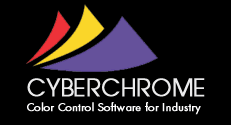 While sharing the data for electronic color standards may seem like a “no brainer”, it’s easy to fall into the trap of making the assumption that the person at the receiving end of the data knows how it was obtained and how to use it. So here are some best practices to follow to make things go smoothly.
While sharing the data for electronic color standards may seem like a “no brainer”, it’s easy to fall into the trap of making the assumption that the person at the receiving end of the data knows how it was obtained and how to use it. So here are some best practices to follow to make things go smoothly.
Whenever possible, share the spectral reflectance data. Since L*, a*, b* values are calculated from this data and are specific for a certain combination of Illuminant and Observer, it is better to provide this raw spectral data and let the software program handle the colorimetric calculations.
Be sure to specify the instrument setup conditions and parameters. Was the specular component included or excluded? Was the UV component included or excluded? What aperture size and lens setting were used? The spectrophotometer on the receiving end of the shared data should use the same set-up conditions.
It is easiest to share electronic color standards both locally and globally when everyone is using the same software program. Since OnColor can be used with all manufacturers’ instruments, it is a good choice for this type of project. Data can be shared using the save-set format of OnColor (WSV) or the Database of Standards (MDBformat). If exporting the standards from another software program, OnColor can read several other formats and can import the data from a text file.
Since OnColor standards also store a color tolerance that is specific for that standard, make sure that the tolerance has been entered and the method for assessing the Pass/Fail is set. When sharing data in OnColor WSV or MDB format, the tolerances and pass/fail method will be automatically set correctly.

In those cases where it is necessary to share colorimetric data such as L*a*b*, make sure that the Illuminant and Observer are clearly stated. Without spectral reflectance data, you cannot convert L*a*b* values from one illuminant to another.
While great strides have been made in the last decade or two with standardizing the calculation of colorimetric values (such as tristimulus XYZ or CIE L*a*b* values), there can still be subtle differences in how the software calculates the values and which tables are used for the weighting functions. OnColor conforms to ASTM E-308 - Standard Practice for Computing the Colors of Objects by Using the CIE System and uses the tables of Table 5 for use with spectral measurement data that have previously been corrected for spectral bandpass dependence.
When you have implemented all of these best practices, then it is still necessary to audit the process from time to time. The final article in this series will discuss how to conduct a color measurement audit. For help in setting up and managing your color standards program, download the white paper by clicking on the button below.

